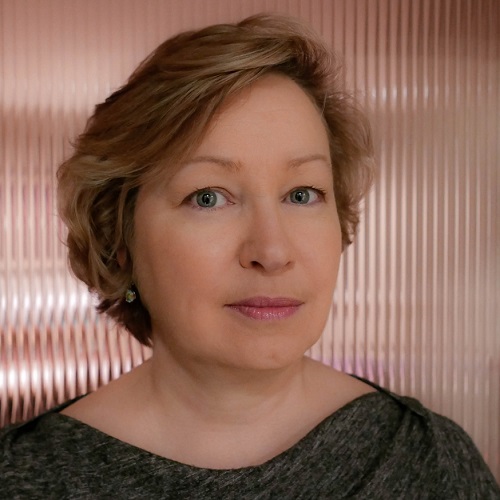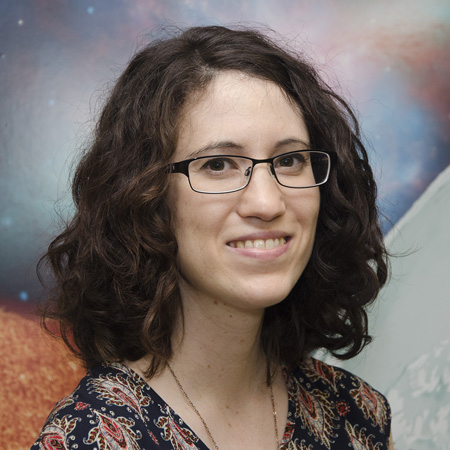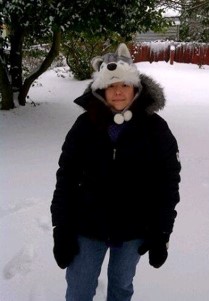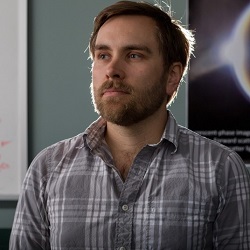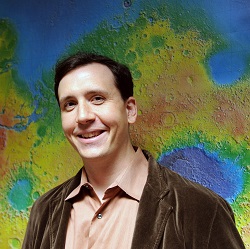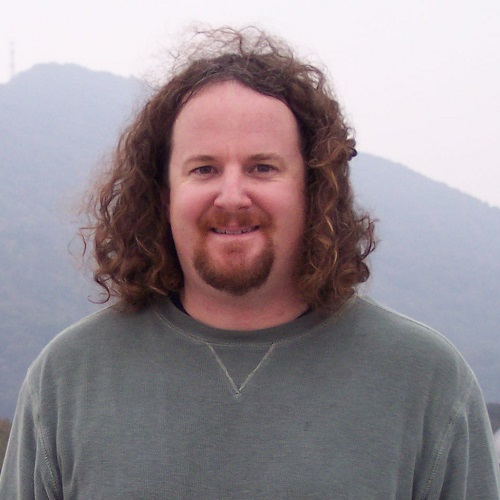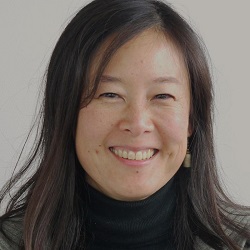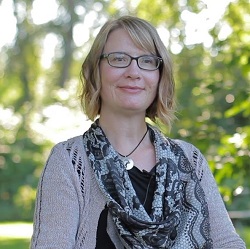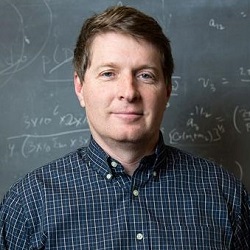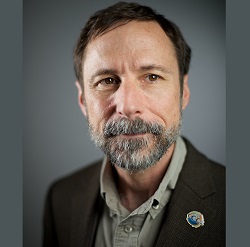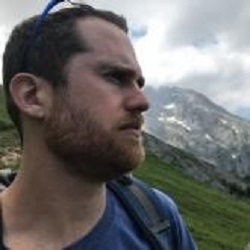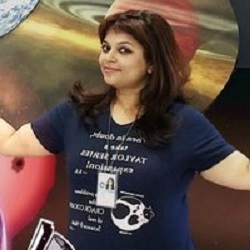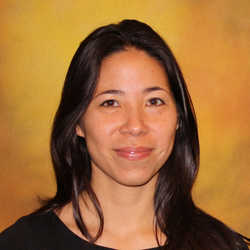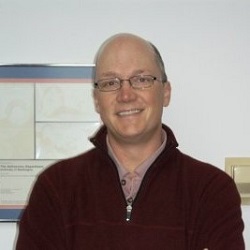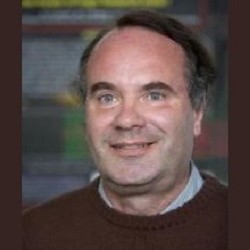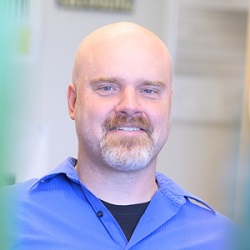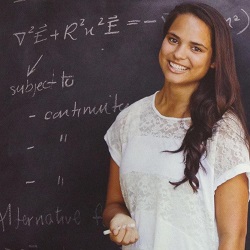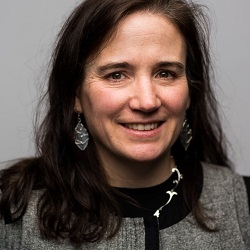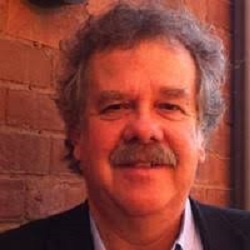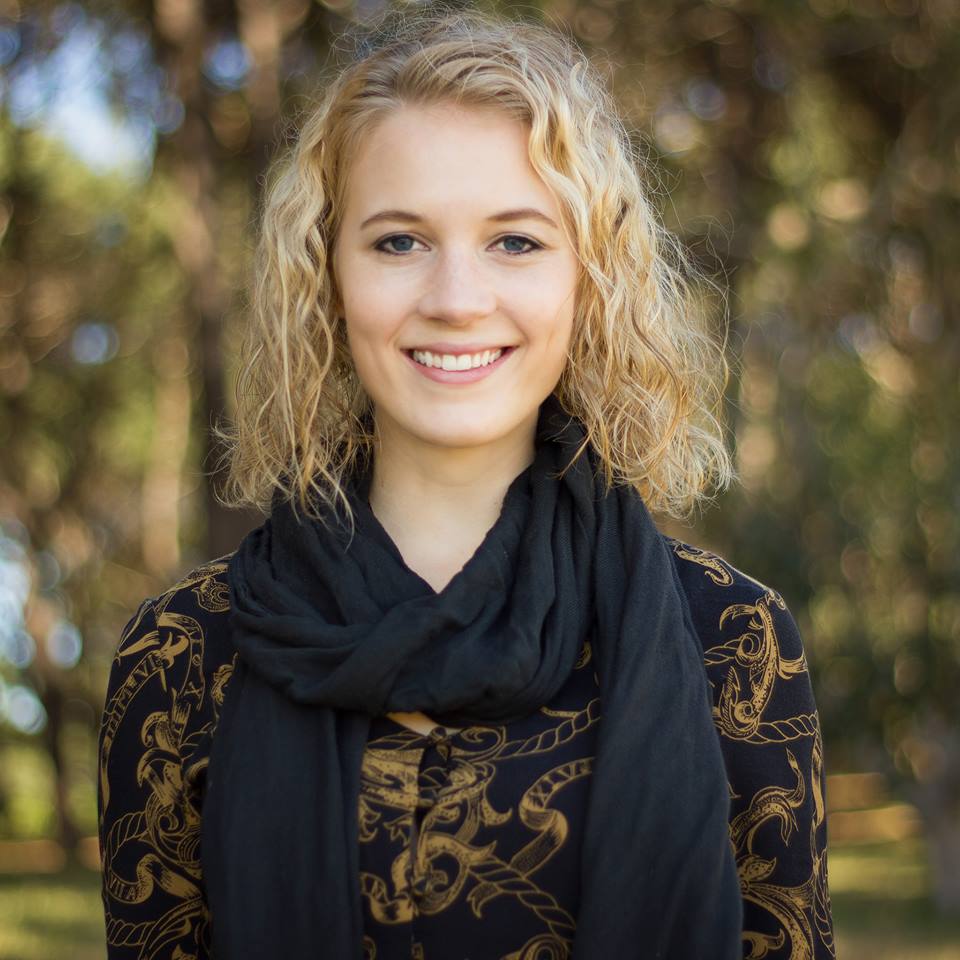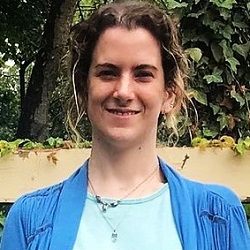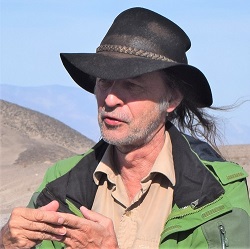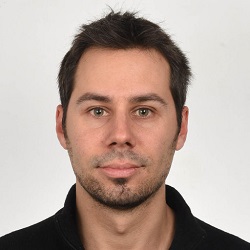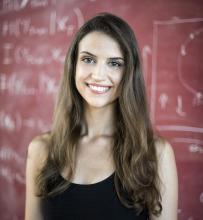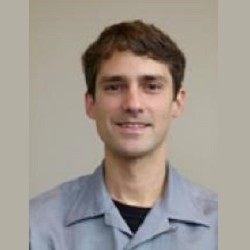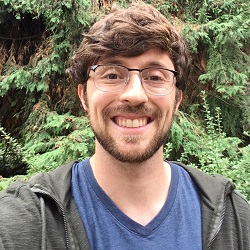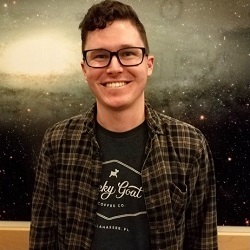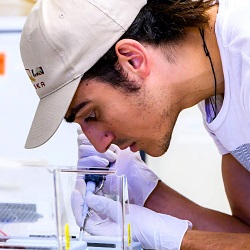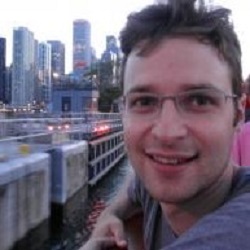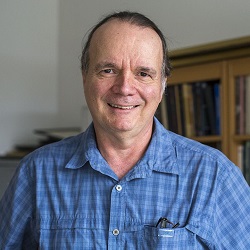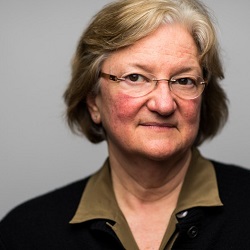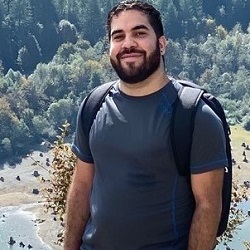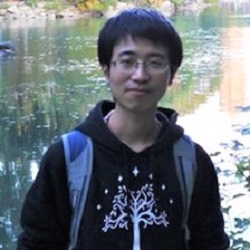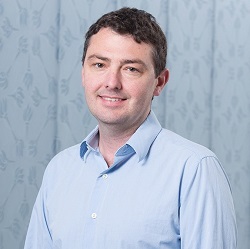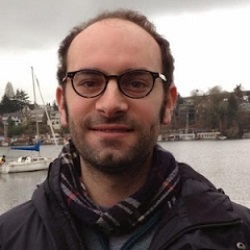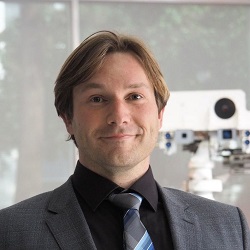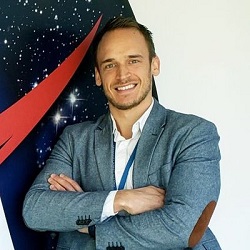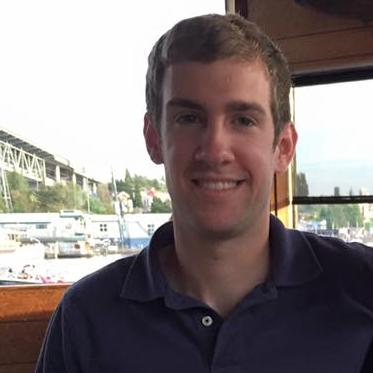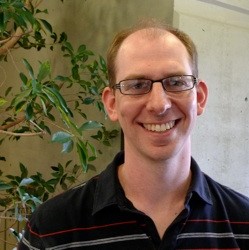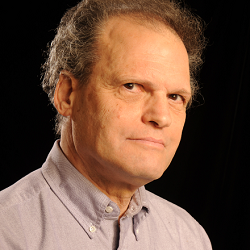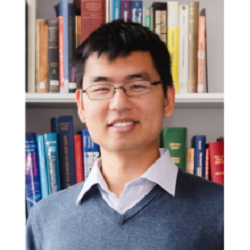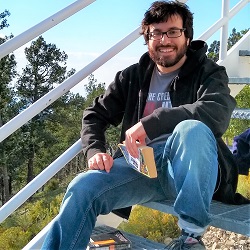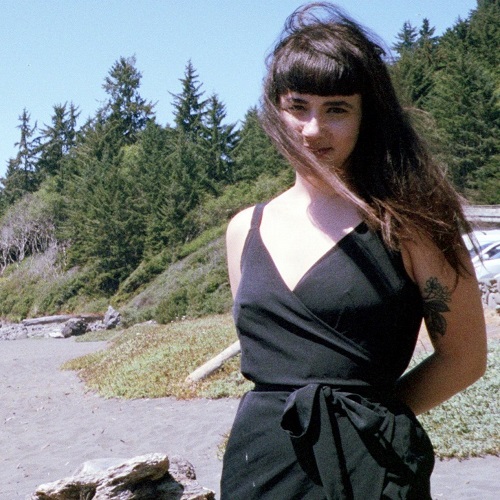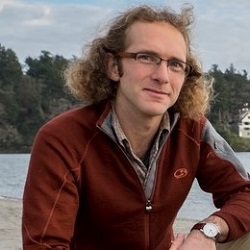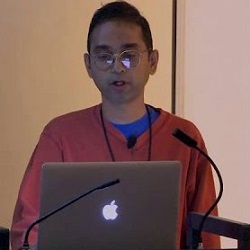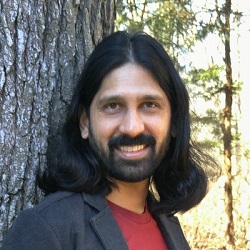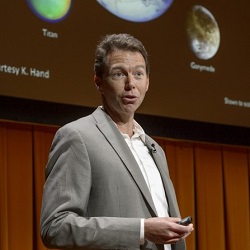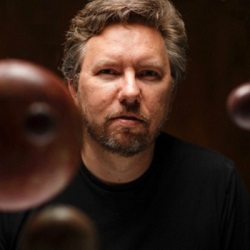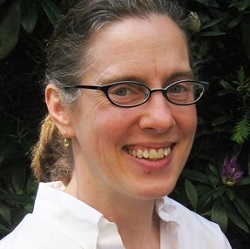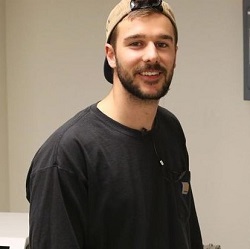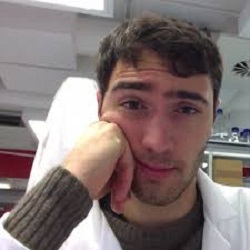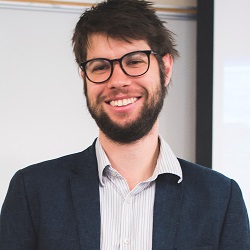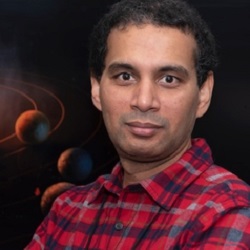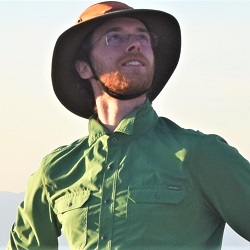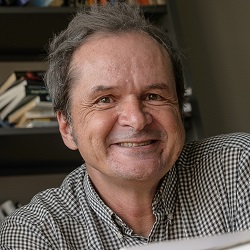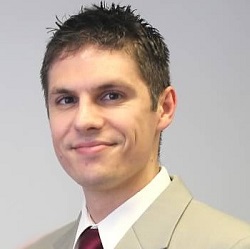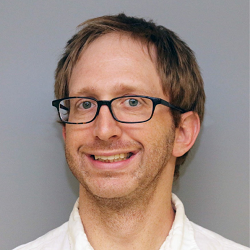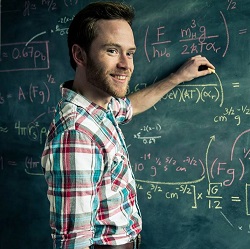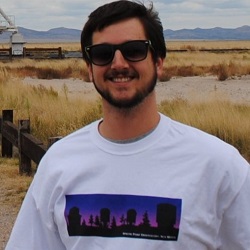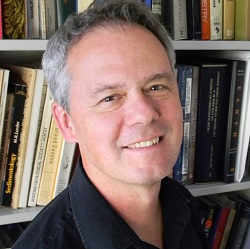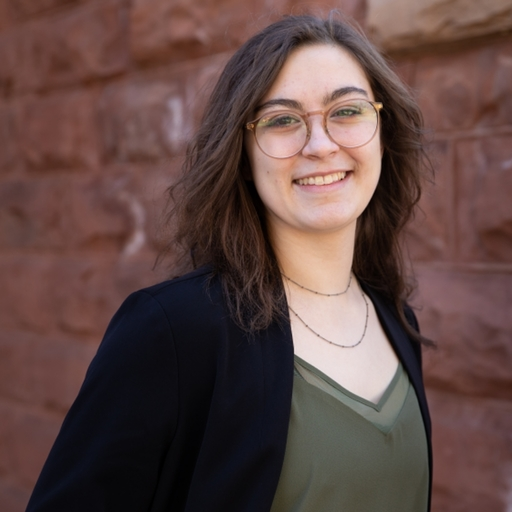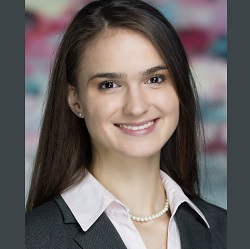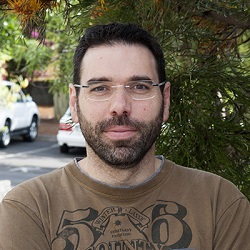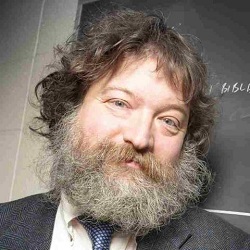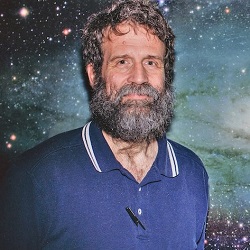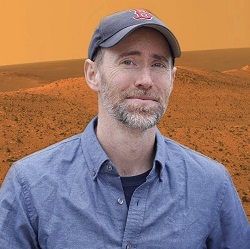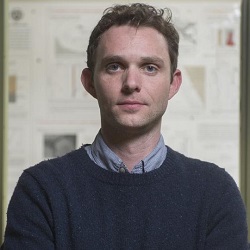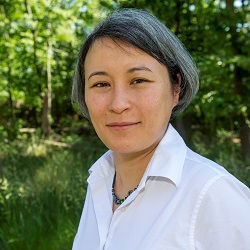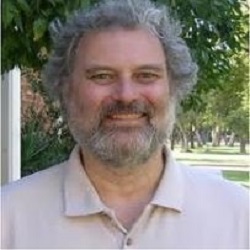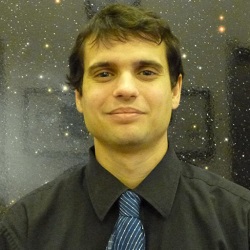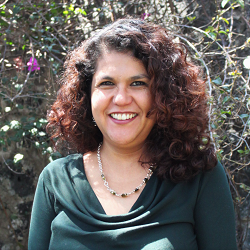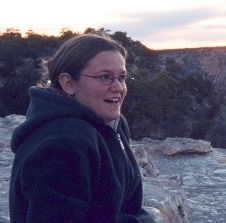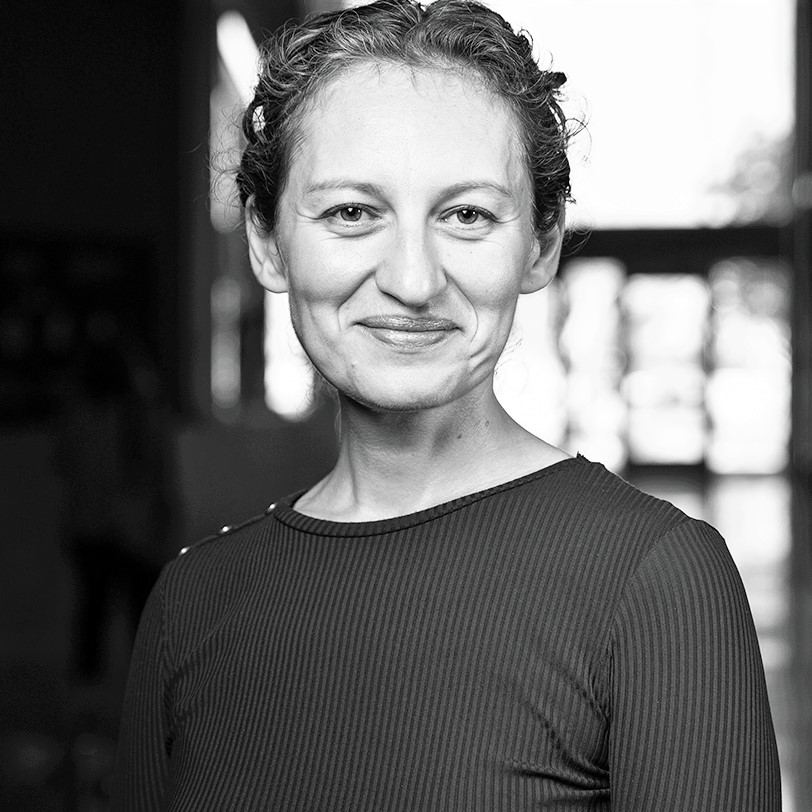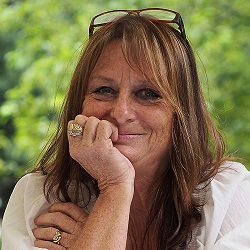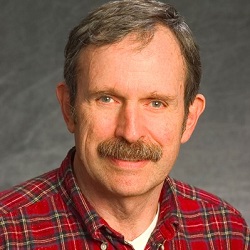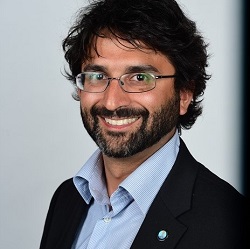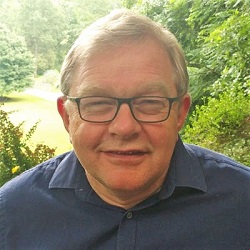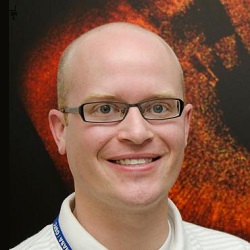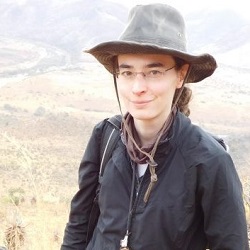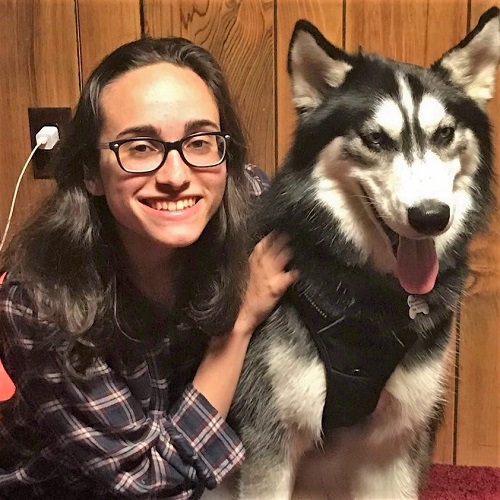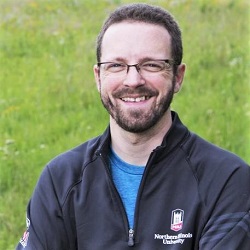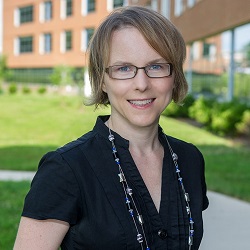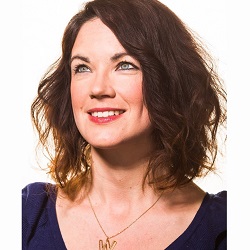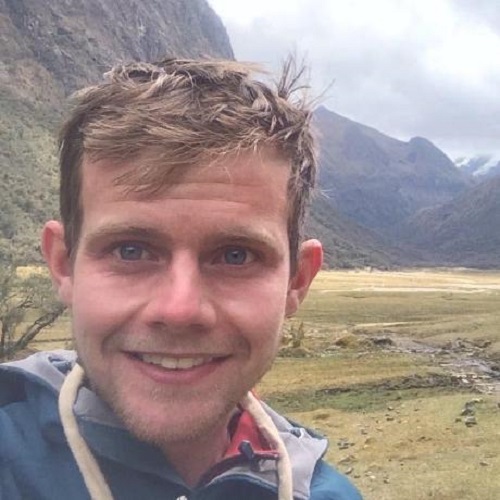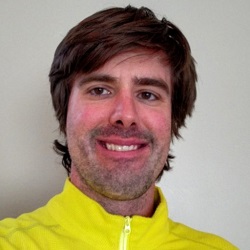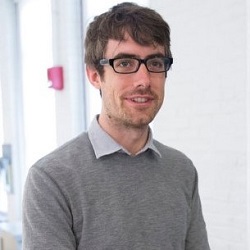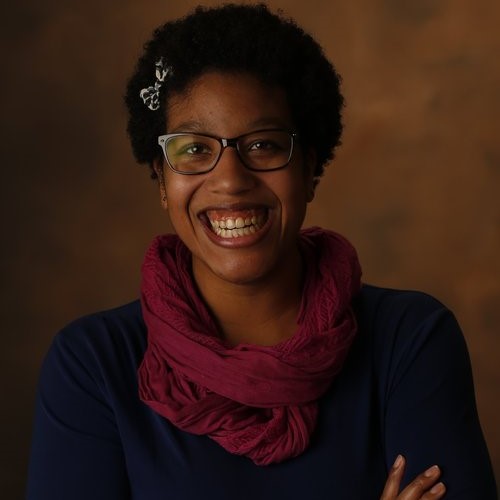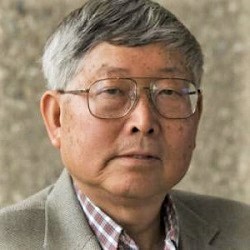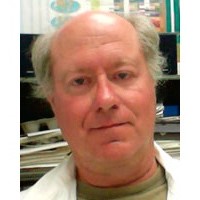The researchers, postdoctoral scholars and students who make up the Virtual Planetary Laboratory span multiple scientific disciplines and geographical locations. For more information on the VPL Team members see the profiles below.
Leadership & Administration
Email: meadows@uw.edu Website: Google Scholar
Bio: Victoria Meadows is an astrobiologist and planetary astronomer whose research interests focus on acquisition and analysis of remote-sensing observations of planetary atmospheres and surfaces. In addition to studying planets within our own Solar System, she is interested in exoplanets, planetary habitability and biosignatures. Since 2000, she has been the Principal Investigator for the Virtual Planetary Laboratory Lead Team of the NASA Astrobiology Institute. Her NAI team uses models of planets, including planet-star interactions, to generate plausible planetary environments and spectra for extrasolar terrestrial planets and the early Earth. This research is being used to help define signs of habitability and life for future extrasolar terrestrial planet detection and characterization missions.
Email: giada.n.arney@nasa.gov
Website:
CV / Publications: https://science.gsfc.nasa.gov/sed/bio/giada.n.arney
VPL Focus: Task A, Task B (Lead), Task E
Bio:
My research has involved modeling and measuring properties of planets with an emphasis on worlds enshrouded by global cloud and haze layers because aerosols appear to be a common planetary phenomeon. I have a dual focus on both solar system bodies and on exoplanets. I have retrieved properties of Venus’ sub-cloud atmosphere through observations of its nightside spectral windows, producing the first simultaneous and temporally resolved maps of cloud opacity, acid concentration, water vapor (H2O), hydrogen chloride (HCl), carbon dioxide (CO), carbonyl sulfide (OCS), and sulfur dioxide (SO2). I also have extensive modeling experience of planetary atmospheres and have comprehensively simulated hazy Archean Earth with a coupled photochemical-climate model to study its atmospheric composition, climate, and habitability. Using a sophisticated radiative transfer model together with a coronagraph noise model and a JWST model, I showed that organic haze on an Earthlike planet produces strong spectral signatures that may be detectable with future telescopes. In addition, I helped lead a paper on Proxima Centauri b’s possible climatic and environmental states and their spectral discriminants, and I have been involved in work identifying oxygen false positive biosignature signals. My current and near-future research focuses on modeling the atmospheric and climatic states of exoplanets, understanding the observational requirements to discriminate between different planetary states with current and future observatories, and re-visiting Venus with new observations.
Task Leads
Email: tyler.robinson@nau.edu
VPL Focus: Task A (Lead)
Bio:
I am a scientist whose research interests include planetary science, exoplanets, planetary climate, remote sensing, radiative transfer, atmospheric characterization, high contrast imaging, observational astronomy, brown dwarfs habitability, and astrobiology. I have worked on a variety of interdisciplinary projects, both as a scientist and as an educator. My recent work has focused on using data and models from the Earth, atmospheric, and planetary sciences to better understand characterization techniques for exoplanets.
Email: giada.n.arney@nasa.gov
Website:
CV / Publications: https://science.gsfc.nasa.gov/sed/bio/giada.n.arney
VPL Focus: Task A, Task B (Lead), Task E
Bio:
My research has involved modeling and measuring properties of planets with an emphasis on worlds enshrouded by global cloud and haze layers because aerosols appear to be a common planetary phenomeon. I have a dual focus on both solar system bodies and on exoplanets. I have retrieved properties of Venus’ sub-cloud atmosphere through observations of its nightside spectral windows, producing the first simultaneous and temporally resolved maps of cloud opacity, acid concentration, water vapor (H2O), hydrogen chloride (HCl), carbon dioxide (CO), carbonyl sulfide (OCS), and sulfur dioxide (SO2). I also have extensive modeling experience of planetary atmospheres and have comprehensively simulated hazy Archean Earth with a coupled photochemical-climate model to study its atmospheric composition, climate, and habitability. Using a sophisticated radiative transfer model together with a coronagraph noise model and a JWST model, I showed that organic haze on an Earthlike planet produces strong spectral signatures that may be detectable with future telescopes. In addition, I helped lead a paper on Proxima Centauri b’s possible climatic and environmental states and their spectral discriminants, and I have been involved in work identifying oxygen false positive biosignature signals. My current and near-future research focuses on modeling the atmospheric and climatic states of exoplanets, understanding the observational requirements to discriminate between different planetary states with current and future observatories, and re-visiting Venus with new observations.
Email: shawn.goldman@nasa.gov
VPL Focus: Task B (Lead), Task D, Task E
Bio:
Shawn Domagal-Goldman in a Research Space Scientist in the Planetary Environments Laboratory at NASA’s Goddard Space Flight Center in Greenbelt, MD. He is an astrobiologist that focuses on comparative planetology. As a member of multiple interdisciplinary teams, he simulates the atmospheres of other worlds, including those of ancient Earth, modern Mars, ancient Mars, and exoplanets. He utilizes the outputs from those simulations to interpret data from some of Earth’s most ancient rocks, from the Mars Curiosity rover, and to simulate the capabilities of future space-based telescopes designed to look for life on exoplanets. Shawn is a collaborator by nature, and a member of many research and mission teams, including the Curiosity science team, the HabEx Science and Technology Definition Team, the Large UV-Optical-Infrared Surveyor (LUVOIR) Study Office, is on multiple research teams in the Nexus for Exoplanet Systems Science (NExSS).
Email: meadows@uw.edu
Website:
Bio:
Victoria Meadows is an astrobiologist and planetary astronomer whose research interests focus on acquisition and analysis of remote-sensing observations of planetary atmospheres and surfaces. In addition to studying planets within our own Solar System, she is interested in exoplanets, planetary habitability and biosignatures. Since 2000, she has been the Principal Investigator for the Virtual Planetary Laboratory Lead Team of the NASA Astrobiology Institute. Her NAI team uses models of planets, including planet-star interactions, to generate plausible planetary environments and spectra for extrasolar terrestrial planets and the early Earth. This research is being used to help define signs of habitability and life for future extrasolar terrestrial planet detection and characterization missions.
Email: nancy.y.kiang@nasa.gov
VPL Focus: Task D (Lead), Task E
Bio:
Dr. Kiang conducts research on the interaction between the biosphere and the atmosphere, focusing on life on land. Through photosynthesis and the evapotranspiration of water from plant leaves, seasonal cycles of growth and decay, and occasional big events like fires, the biosphere on Earth exchanges heat, water vapor, carbon dioxide, methane, nitrogen in different forms, and many other compounds with the atmosphere. These exchanges result in the biosphere actively controlling the climate and spectral properties of the Earth.
Dr. Kiang also relates this work to research in astrobiology, particularly with regard to how photosynthetic activity produces signs of life at the global scale (e.g., biogenic gases like oxygen and photosynthetic pigments like chlorophyll) and how these may exhibit adaptations to alternative environments on extrasolar planets, resulting in other “biosignatures” that might be detected by space telescopes.
Her work includes computer simulation modeling of vegetation dynamics coupled to atmospheric general circiulation models (GCMs), occasional fieldwork, and theoretical studies on the thermodynamic efficiency of photon energy use in photosynthesis. Dr. Kiang splits her time between New York and Los Angeles.
Selected Publications:
Mielke, S.P., N.Y. Kiang, R.E. Blankenship, M.R. Gunner, and D. Mauzerall, 2011: Efficiency of photosynthesis in a Chl d-utilizing cyanobacterium is comparable to or higher than that in Chl a-utilizing oxygenic species. Biochim. Biophys. Acta Bioenerg., 1807, 1231-1236, doi:10.1016/j.bbabio.2011.06.007.
Kiang, N.Y., 2008: The color of plants on other worlds. Sci. Amer., 298, no. 4, 48-55. (Cover article)
Kiang, N.Y., A. Segura, G. Tinetti, Govindjee, R.E. Blankenship, M. Cohen, J. Siefert, D. Crisp, and V.S. Meadows, 2007: Spectral signatures of photosynthesis II: Coevolution with other stars and the atmosphere on extrasolar worlds. Astrobiology, 7, 252-274, doi:10.1089/ast.2006.0108.
Kiang, N.Y., J. Siefert, Govindjee, R.E. Blankenship, and V.S. Meadows, 2007: Spectral signatures of photosynthesis I: Review of Earth organisms. Astrobiology, 7, 222-251, doi:10.1089/ast.2006.0105.
Email: Mary.N.Parenteau@nasa.gov
VPL Focus: Task D (Lead)
Bio:
I study the physiology of microbes in extreme environments, and the production and preservation of their biosignatures in mineral deposits analogous to ones found on Mars.
Email: agol@uw.edu
VPL Focus: Task E (Lead)
Bio:
Eric Agol studies transits of extrasolar planets, for which he has created a widely used modeling code and helped originate the idea of detecting and characterizing planets using transit time variations.
He is a former member of the Kepler team, with which he led the discovery and characterization a closely orbiting super-Earth and mini-Neptune (Kepler 36), and he helped to characterize two circumbinary planet systems, including the first two-planet system orbiting a binary star (Kepler 38 and 47).
He first postulated the possibility of long-lived habitable planets around white dwarf stars (if they could form or migrate inward, and retain volatiles). He is also interested in atmospheric modeling of hot jupiters, coronagraphic imaging, radial velocity surveys, and mapping of extrasolar planets (using their time-dependent variation). He has recently helped to characterize the Earth-sized transiting exoplanets in the TRAPPIST-1 system
Email: david.crisp@jpl.nasa.gov
VPL Focus: Task E (Lead)
Bio:
Dr. David Crisp is an atmospheric physicist and a Senior Research Scientist at the Jet Propulsion Laboratory, California Institute of Technology.
Since receiving his Ph.D. from the Geophysical Fluid Dynamics Program at Princeton University in 1984, he has focused primarily on the development of radiative transfer algorithms for remote sensing and climate models of Venus, Earth, and Mars. Dr. Crisp has served on the science teams of several missions including the Venus VEGA Balloon Mission, Hubble Space Telescope Wide Field/Planetary Camera 2 (WFPC2), Mars Pathfinder Lander Atmospheric Structure Instrument, Mars Polar Lander MVACS Meteorology Experiment, and ESA Venus Express. He contributed to the NASA technology program by developing in situ atmospheric structure and meteorological instruments and serving as the Chief Scientist of the NASA New Millennium Program, from 1998 to 2001.
Dr. Crisp was the Principal Investigator of the Earth System Science Pathfinder (ESSP) Orbiting Carbon Observatory (OCO) mission, NASA’s first dedicated carbon dioxide measurement mission. He is currently serving as the Science Lead of the OCO-2 Mission.
Researchers
Email: abbot@uchicago.edu
VPL Focus: Task B
Bio:
I use mathematical and computational models to understand and explain fundamental problems in Earth and Planetary Sciences. I have worked on problems related to climate, paleoclimate, the cryosphere, planetary habitability, and exoplanets, but I’m always excited to think about new things. I work best with students who have strong mathematical skills that they want to apply to cool problems. Recently I’ve been focusing a lot of effort on terrestrial exoplanets and habitability. We have a really great community with three faculty in our department and three in astronomy working on exoplanets.
Email: agol@uw.edu
VPL Focus: Task E
Bio:
Eric Agol studies transits of extrasolar planets, for which he has created a widely used modeling code and helped originate the idea of detecting and characterizing planets using transit time variations.
He is a former member of the Kepler team, with which he led the discovery and characterization a closely orbiting super-Earth and mini-Neptune (Kepler 36), and he helped to characterize two circumbinary planet systems, including the first two-planet system orbiting a binary star (Kepler 38 and 47).
He first postulated the possibility of long-lived habitable planets around white dwarf stars (if they could form or migrate inward, and retain volatiles). He is also interested in atmospheric modeling of hot jupiters, coronagraphic imaging, radial velocity surveys, and mapping of extrasolar planets (using their time-dependent variation). He has recently helped to characterize the Earth-sized transiting exoplanets in the TRAPPIST-1 system
Email: randerson@carleton.edu
VPL Focus: Task B
Bio:
I’m an assistant professor at Carleton College in the Biology department. The overarching goal of my research is to understand how life co-evolves with its environment over time. We use next-generation sequencing tools to better understand the processes that drive microbial and viral evolution over time. We collaborate with astronomers, geologists, chemists, and atmospheric scientists to ask big-picture questions in astrobiology and oceanography.
My work with VPL focuses on the analysis of phylogenetic trees to better constrain when specific microbial metabolisms were radiating across the tree of life. I collaborate with geochemists to corroborate these findings with the geochemical record. Our hope is to better understand which microbial metabolisms were most important at specific points in Earth’s history and to connect that with possible observable biosignatures.
Email: jcarmstrong@weber.edu
VPL Focus: Task C
Bio:
My primary research focus is working with the Virtual Planetary Laboratory to help characterize the properties of planets around other stars. In addition, I analyze data from several Mars missions to explore the history of the Martian climate. I am also interested in problems related to high performance computing and visualization
Email: giada.n.arney@nasa.gov
Website:
CV / Publications: https://science.gsfc.nasa.gov/sed/bio/giada.n.arney
VPL Focus: Task A, Task B (Lead), Task E
Bio:
My research has involved modeling and measuring properties of planets with an emphasis on worlds enshrouded by global cloud and haze layers because aerosols appear to be a common planetary phenomeon. I have a dual focus on both solar system bodies and on exoplanets. I have retrieved properties of Venus’ sub-cloud atmosphere through observations of its nightside spectral windows, producing the first simultaneous and temporally resolved maps of cloud opacity, acid concentration, water vapor (H2O), hydrogen chloride (HCl), carbon dioxide (CO), carbonyl sulfide (OCS), and sulfur dioxide (SO2). I also have extensive modeling experience of planetary atmospheres and have comprehensively simulated hazy Archean Earth with a coupled photochemical-climate model to study its atmospheric composition, climate, and habitability. Using a sophisticated radiative transfer model together with a coronagraph noise model and a JWST model, I showed that organic haze on an Earthlike planet produces strong spectral signatures that may be detectable with future telescopes. In addition, I helped lead a paper on Proxima Centauri b’s possible climatic and environmental states and their spectral discriminants, and I have been involved in work identifying oxygen false positive biosignature signals. My current and near-future research focuses on modeling the atmospheric and climatic states of exoplanets, understanding the observational requirements to discriminate between different planetary states with current and future observatories, and re-visiting Venus with new observations.
Email: j.bailey@unsw.edu.au
VPL Focus: Task A, Task E
Bio:
Email: jbaross@uw.edu
VPL Focus: Task B
Bio:
John Baross is a Professor in Oceanography and the Astrobiology Program at the University of Washington. He specializes in the ecology, physiology, and taxonomy of microorganisms from hydrothermal vent environments, and the use of biochemical and molecular methods to detect, quantify, and classify the same. John has particular interests in the microbial ecology of extreme environments, the biotechnological applications of microorganisms that grow in extreme environments, astrobiology, and in the significance of submarine hydrothermal vent environments for the origin and evolution of life. The novel environment and microbes present at Lost City are of great interest to John and his laboratory group. Samples recovered from this field offer potential for new discoveries and insights into life in the extreme environments of hydrothermal vents.
Email: bitz@atmos.washington.edu
VPL Focus: Task C
Bio:
I am interested in the role of ice in the climate system and high-latitude climate and climate change, brupt climate change, coupled biological-climate systems, and global coupled climate modeling.
Email: royblack@comcast.net
VPL Focus: Task D
Bio:
Over a 26-year career in the biotechnology industry, I built and led R&D programs that identified the enzymes required for the release from cells of two central mediators of inflammation, interleukin-1β and tumor necrosis factor-α. In addition to authoring key papers on the biochemistry, structure and cell biology of these enzymes, I co-directed medicinal chemistry efforts to develop inhibitors for therapeutic use. I also led a program to develop a naturally occurring protein inhibitor of metalloproteases for use in treating osteoarthritis and heart failure.
In 2010, I took a sabbatical to learn about prebiotic membranes in the laboratory of Dr. David Deamer at the University of California-Santa Cruz, and in 2011 I left industry to pursue my origin-of-life interest as an affiliate professor at the University of Washington. With Dr. Sarah Keller in the Department of Chemistry, I have published a paper showing that RNA bases and ribose bind to and stabilize a model prebiotic membrane, and a review of evidence for the concept that a self-assembled aggregate composed of a fatty acid membrane and the building blocks of biological polymers provides a first step in the emergence of cells. We were awarded a grant from NASA in 2017 to establish further evidence for this concept.
Email: kbott@ucr.edu
VPL Focus: Task E
Bio:
My research combines observation, instrumentation, and theoretical approaches to characterizing exoplanets and finding realistic means to determine their habitability. My recent work has specialized in polarimetry of potentially habitable terrestrial exoplanets. I have helped develop radiative transfer code for both transits and polarimetry; am experienced in instrument design, fabrication, and testing (polarimeters and other instruments); and have observed a variety of objects (galaxies, red dwarf stars, planet hosting systems, etc.) using a variety of instruments (e.g. aperture polarimeters, IFUs, vis & IR photometers, etc.). My work has disputed the first detection of polarized light from an exoplanet, eliminated certain cloud scenarios for a hot Jupiter, provided guidelines for reliable polarized light detection from exoplanets, improved the modelling software available for radiative transfer (including polarization), and provided estimates of polarimetric signals from realistic terrestrial and super Earth scenarios utilizing climate models, with comparisons of polarimetry to other characterization methods. I am deeply aware of the needs of software development and laboratory inputs to enable the use of models in the detection and characterization of exoplanets and the icy moons of our Solar System, as well as of the observational needs for such endeavors.
Email: avb5903@psu.edu
VPL Focus: Task C
Bio:
I study ion escape from Venus, which lacks an intrinsic magnetic field. Solar radiation ionizes molecules near the top of the atmosphere. The Venusian ion environment and the magnetized solar wind both generate electric fields, which can accelerate ions away from the planet. My work addresses the energy deposition associated with localized plasma wave transport across the solar wind shock region into Venus’s atmosphere.
Email: buick@ess.washington.edu
VPL Focus: Task B
Bio:
I am interested in the origin and earliest evolution of life on Earth and how that can be used as an analogue for life elsewhere in the Universe. My research techniques lie at the intersection of geology, biology and chemistry, examining the oldest and best-preserved rocks available. This involves fieldwork in the Australian outback, on the Greenland ice-cap and in the Canadian woods, amongst other places.
Examples of current projects include:
Early evolution of bacterial metabolism – palaeontology and stable-isotope geochemistry of Archaean sedimentary rocks, with the aim of determining when the main forms of microbial metabolism first arose and whether this caused environmental change in the atmosphere and oceans.
Early Archaean atmospheric composition – detrital heavy minerals in Archaean fluvial sandstones, with the aim of determining whether their alteration patterns indicate primordial atmospheric greenhouse effect modulated by carbon dioxide or some other gas in order to counteract the weaker solar luminosity during Earth’s early history.
Secular trends in marine nutrient fluxes and their ecological impact – phosphorus and nitrogen geochemistry in sedimentary rocks through time, with the aim of betterquantifying oceanic fluxes and budgets for these elements, identifying temporal trends in their sources and sinks, and determining whether these reflect or influenced ecosystem evolution.
Early evolution of continental crust – trace-element and radiogenic-isotope geochemistry of basalts ~3.5 billion years old across an ancient unconformity in the Pilbara Craton, Australia, with the aim of contraining the primordial growth rate of continental crust, the tectonic environments of the early Earth and the biological impacts of crustal differentiation.
Molecular fossils from early Precambrian rocks – organic geochemistry of well-preserved Archaean and Palaeoproterozoic hydrocarbons and kerogen, with the aim of discovering organic geochemical biomarkers that constrain the phylogenetic history of microbial ecosystems.
Selected Publications:
2012: Som, S.M, Catling, D.C., Harnmeijer, J.P., Polivka, P.M. & BUICK, R. Air density 2.7 Gyr ago limited to less than twice modern levels by fossil raindrops. Nature, 484, 359-362.
2012: Stüeken, E.E., Catling, D.C. & BUICK, R. Contributions to late Archaean sulphur cycling by life on land. Nature Geoscience, 5, 722-725.
2011: Summons, R.E., Amend, J.P., Bish, D.L., BUICK, R., Cody, G.D., Des Marais, D.J., Dromart, G., Eigenbrode, J.L., Knoll, A.H. & Sumner, D.Y., Preservation of Martian organic and environmental records: final report of the Mars Biosignature Working Group. Astrobiology, 11, 157-181.
2009: Garvin, J., BUICK, R., Anbar, A.D., Arnold, G.L. & Kaufman, A.J., Isotopic evidence for an aerobic nitrogen cycle in the latest Archean. Science, 323, 1045-1048.
2008: BUICK, R., When did oxygenic photosynthesis evolve? Philosophical Transactions of the Royal Society B, 363, 2731-2743.
2007: Anbar, A.D., Duan, Y., Lyons, T.W., Arnold, G.L., Kendall, B., Creaser, R.A., Kaufman, A.J., Gordon, G.W., Scott, C., Garvin, J. & BUICK, R., A whiff of oxygen before the Great Oxidation Event. Science, 317, 1903-1906.
2007: Kaufman, A.J., Johnston, D.T., Farquhar, J., Masterton, A.L., Lyons, T.W., Bates, S., Anbar, A., Arnold, G.L., Garvin, J. & BUICK, R., Astrobiological insights into global biospheric oxygenation and atmospheric evolution. Science, 317, 1900-1903.
2001: Shen, Y., BUICK, R. & Canfield, D.E., Isotopic evidence for microbial sulphate reduction in the early Archaean era. Nature, 410, 77-81.
1999: Brocks, J.J., Logan, G.A., BUICK, R. & Summons, R.E., Archean molecular fossils and the early rise of eukaryotes. Science, 285, 1033-1036.
1998: Dutkiewicz, A., Rasmussen, B. & BUICK, R., Oil preserved in fluid inclusions in Archaean sandstones. Nature, 395, 885-888.
Email: dcatling@u.washington.edu
VPL Focus: Task B, Task D
Bio:
After a doctorate in the Dept. of Atmospheric, Oceanic and Planetary Physics at the University of Oxford, England, I worked as a planetary scientist near San Francisco at NASA’s Ames Research Center from 1995-2001. In 2001, I joined the faculty at the University of Washington in Seattle. I also had a stint as European Union Marie Curie Chair in Earth and Planetary System Science at the University of Bristol, England, from 2005-2008, while also an affiliate professor at the University of Washington.
Currently, I’m a Professor jointly appointed to the Dept. of Earth and Space Sciences and cross-campus Astrobiology Program at the University of Washington. My research interests revolve around understanding the co-evolution of planetary atmospheres, planetary surfaces, and life. This includes collecting and interpreting data from other planets and the Earth. A key goal is to understand the habitability of planets in general. I have also been involved in NASA’s exploration of Mars and was part of a 35-person team of scientists responsible for NASA’s Phoenix Mission, a probe that landed and operated successfully in the northern polar region of Mars in 2008. I am author of the book, Astrobiology: A Very Short Introduction— a readable and up-to-date summary of the subject. I also have co-written a technical book aimed at researchers and PhD students entitled Atmospheric Evolution on Inhabited and Lifeless Worlds.
For more info on research, check out my publications.
Email: benjamin.charnay@lmd.jussieu.fr
VPL Focus: Task B, Task C, Task E
Bio:
My research topic is the physics and dynamics of planetary atmospheres. I have been focussing on the dynamics of Titan’s troposphere and the climates of the early Earth. Now, I am also studying the atmospheres and climates of exoplanets (i.e. dynamics, photochemistry, clouds and haze). I study these atmospheres with 3D Global Climate Models (GCMs).
Research interests:
- Titan’s troposphere (dynamics, planetary boundary layer, surface winds and dune formation)
- Climatic evolution of Titan
- Climates of the early Earth (faint young Sun problem and formation of organic haze)
- Habitability of exoplanets
- Exoplanetary atmospheres (super-Earths and Neptune-size planets)
Email: jadecheclair@uchicago.edu
VPL Focus: Task D
Bio:
I am developing statistical habitability tests we could use with future direct imaging instruments (LUVOIR and/or HabEx). In particular, I am interested in ways to test the concept of the habitable zone and its boundaries using large samples of exoplanets. Currently, I am working on how we could test for a functioning silicate-weathering feedback on habitable exoplanets. My goal is to determine the feasibility of those statistical tests, by exploring how many exoplanets we would need to observe in order to conduct them given observational constraints.
A large part of my work also focused on studying the climate of potentially habitable tidally locked planets, which may be common around M-dwarf stars. Particularily, I looked at the Snowball bifurcation on tidally-locked planets.
Email: mc229@st-andrews.ac.uk
VPL Focus: Task B, Task C
Bio:
I work on improving models of terrestrial planets, with the aim of reducing uncertainties in our ability to interpret spectra of extrasolar planets. I work with the VPL photochemical and climate models, and am broadly interested in questions of atmospheric evolution and planetary habitability.
Selected publications:
Claire, M.W. , Sheets, J., Cohen, M., Ribas, I., and Catling, D.C., “The evolution of solar flux from 2 nm to 160 microns: quantitative estimates for planetary studies” Astrophysical Journal, in press, 2012.
Zerkle A., Claire M., Domagal-Goldman S., Farquhar J., and Poulton S. “A bistable organic-rich atmosphere on the Neoarchaean Earth, Nature Geosciences, 2012. DOI: 10.1038/NGEO1425.
Domagal-Goldman, S.D., Meadows, V.C, Claire, M.C., Kasting, J.F. “Astronomical biosignatures for sulfur-rich anoxic biospheres.” Astrobiology, 11(5), 2011.
Beal, E., Claire, M, and House, C.. “High rates of anaerobic methanotrophy at low sulfate concentration with implications for past and present methane levels” Geobiology, DOI: 10.1111/j.1472-4669.2010.00267.x, 2011.
Tian, F., Claire, M., Haqq-Misra, J., Smith, M.,Crisp, D., Catling, D., Zahnle, K., Kasting, J. . “Photochemical and climate consequences of sulfur outgassing on early Mars.” Earth and Planetary Sciences Letters, 295 (3-4), 412-418, 2010.
Catling, D.C., Claire, M. W., Zahnle, K. J., Quinn, R. C., Clark, B. C., Hecht, M. H., Kounaves, S. “Atmospheric origins of perchlorate on Mars and in the Atacama”, J. Geophys. Res., 115,E00E11, 1-15, 2010
Marion, G.M., Catling, D.C., Zahnle, K.J., and Claire, M.W. “Modeling aqueous perchlorate chemistries with applications to Mars”, Icarus, 207 (2) 675-685, 2010.
Goldblatt C., Claire, M. , Lenton, T. , Matthews, A., Watson, A., Zahnle, K. “Nitrogen-enhanced greenhouse warming on the early Earth” Nature Geosciences, 2 (12), 891-896, 2009.
Catling, D.C., Claire, M.W., and Zahnle, K.J., “Anaerobic methanotrophy and the rise of atmospheric oxygen” Philosophical Transactions of the Royal Society of London – A, 365, 1867-1888, 2007.
Mix, L. J. et al., “The Astrobiology Primer: An Outline of General Knowledge – Version 1, 2006”, Astrobiology, 6 (5),735-813, 2006.
Claire, M.W., Catling, D.C., and Zahnle, K.J., “Biogeochemical modeling of the rise in atmospheric oxygen” Geobiology, 4, 239-269, 2006.
Zahnle, K.J., Claire, M.W., and Catling, D.C. “The loss of mass-independent fractionation in sulfur due to a Paleoproterozoic collapse of atmospheric methane” Geobiology, 4, 271-283, 2006.
Catling, D.C and Claire, M.W., “How Earth’s atmosphere evolved to an oxic state – A status report” , Earth and Planetary Sciences Letters – Frontiers, 237, 1-20, 2005.
Email: zrcohen2@u.washington.edu
VPL Focus: Task C
Bio:
I’m interested in the role of primitive membranes during the origin of life on Earth. My research focuses on the idea that membranes could act as organizing centers for other prebiotically available biomolecules (like amino acids), and potentially catalyze their polymerization. Unlike many other theories for the origin of life, this model suggests a mechanism for the co-localization of all the major components of life, right from the earliest stages of protocell formation.
Email: david.crisp@jpl.nasa.gov
VPL Focus: Task E (Lead)
Bio:
Dr. David Crisp is an atmospheric physicist and a Senior Research Scientist at the Jet Propulsion Laboratory, California Institute of Technology.
Since receiving his Ph.D. from the Geophysical Fluid Dynamics Program at Princeton University in 1984, he has focused primarily on the development of radiative transfer algorithms for remote sensing and climate models of Venus, Earth, and Mars. Dr. Crisp has served on the science teams of several missions including the Venus VEGA Balloon Mission, Hubble Space Telescope Wide Field/Planetary Camera 2 (WFPC2), Mars Pathfinder Lander Atmospheric Structure Instrument, Mars Polar Lander MVACS Meteorology Experiment, and ESA Venus Express. He contributed to the NASA technology program by developing in situ atmospheric structure and meteorological instruments and serving as the Chief Scientist of the NASA New Millennium Program, from 1998 to 2001.
Dr. Crisp was the Principal Investigator of the Earth System Science Pathfinder (ESSP) Orbiting Carbon Observatory (OCO) mission, NASA’s first dedicated carbon dioxide measurement mission. He is currently serving as the Science Lead of the OCO-2 Mission.
Email: mcurr@uw.edu
VPL Focus: Task A, Task E
Bio:
Email: cdavis45@uw.edu
VPL Focus: Task C, Task E
Bio:
Email: russell.deitrick@gmail.com
VPL Focus: Task C
Bio:
I work on the dynamics of exoplanets and star systems, and also do a bit of climate modeling to understand how habitability can be impacted orbital evolution. I work with other VPL members: Rory Barnes (my dissertation advisor), Cecilia Bitz, Thomas Quinn, Victoria Meadows, John Armstrong, Rodrigo Luger, and Sean Raymond. I’m currently developing a model, with Rory Barnes, Rodrigo Luger, Tom Quinn, Peter Driscoll, and David Fleming, to couple the myriad of physical processes which affect planetary evolution. We are using this model to study the habitability of planets like Proxima Centauri b.
Email: jdeming@uw.edu
VPL Focus: Task D
Bio:
Jody W. Deming earned her Ph.D. in (marine) Microbiology from the University of Maryland (1981), after a B.A. in Biological Sciences cum laude from Smith College (1974). She developed microbial life detection assays for NASA between degree programs (1974–1977). She then received NSF and NOAA postdoctoral fellowships for deep-sea research (1981–1983) at the Scripps Institution of Oceanography and the Johns Hopkins University. She continued research at Johns Hopkins, including Alvin dives at deep-sea hydrothermal vents, until moving to the University of Washington in 1988, where she is Professor in the School of Oceanography. At UW, she has directed the Marine Bioremediation Program (1992–1999), launched the Center for Environmental Genomics, helped establish the nation’s first graduate training program in Astrobiology (1998–present), and directed the Future of Ice Initiative (2014–2015). She and her students currently explore microbial life in the Arctic Ocean and its sea-ice cover. She chaired the International Arctic Polynya Program (2000–2012) and served on the US Polar Research Board during the International Polar Year (2007–2009) and as chief scientist on international, overwintering icebreaking expeditions (2003–2004, 2008–2009). She counts over 50 seagoing or ice-related expeditions during her career. Among her awards are the US Coast Guard Arctic Service Medal (1993), Honorary Doctorate in Science and Engineering, Université Laval, Quebec City (2006), Walters Endowed Professorship (2009–2016), Hasselblad Guest Professor, University of Göteburg, Sweden (2015), and Karl M. Banse Endowed Professorship (2016– present). She is Editor-in-Chief of the Ocean Science domain of Elementa: Science of the Anthropocene, a member of the American Academy of Microbiology (elected 1999) and of the US National Academy of Sciences (elected 2003). She loves to swim, in salty water.
Email: hdelgad9@uw.edu
VPL Focus:
Bio:
Email: fengding@seas.harvard.edu
VPL Focus: Task A, Task C
Bio:
I am interested in exploring diverse planetary climate states by building simple models. Currently, I am working on the climate in condensible-rich atmospheres and the implication for habitability of exoplanets.
Email: shawn.goldman@nasa.gov
VPL Focus: Task B (Lead), Task D, Task E
Bio:
Shawn Domagal-Goldman in a Research Space Scientist in the Planetary Environments Laboratory at NASA’s Goddard Space Flight Center in Greenbelt, MD. He is an astrobiologist that focuses on comparative planetology. As a member of multiple interdisciplinary teams, he simulates the atmospheres of other worlds, including those of ancient Earth, modern Mars, ancient Mars, and exoplanets. He utilizes the outputs from those simulations to interpret data from some of Earth’s most ancient rocks, from the Mars Curiosity rover, and to simulate the capabilities of future space-based telescopes designed to look for life on exoplanets. Shawn is a collaborator by nature, and a member of many research and mission teams, including the Curiosity science team, the HabEx Science and Technology Definition Team, the Large UV-Optical-Infrared Surveyor (LUVOIR) Study Office, is on multiple research teams in the Nexus for Exoplanet Systems Science (NExSS).
Email: thomas.j.fauchez@nasa.gov
VPL Focus: Task E
Bio:
Email: dflemin3@uw.edu
VPL Focus: Task C
Bio:
As a member of the UW eScience Institute’s Integrative Graduate Education and Research Traineeship (IGERT) in Big Data and Data Science, I work on dealing with the large parameter space required to accurately model exoplanet systems using the code VPLANET (see Barnes et al. 2016). The massive parameter space afforded by VPLANET’s inclusion of numerous physical modules ranging from atmospheric escape to orbital dynamics necessitates the use machine learning techniques to analyze the output of a large number of simulations and to intelligently traverse this parameter space. I am particularly interested in the application of machine learning techniques to wrangle this large parameter space to draw inferences about exoplanet habitability and understand the underlying physical processes that influence habitability.
Email: gaopeter@berkeley.edu
VPL Focus: Task A
Bio:
I am currently a 51 Pegasi b Postdoctoral Fellow at the University of California, Berkeley. My research focuses on aerosols and chemistry in planetary atmospheres within and beyond the Solar System.
I recieved my PhD in Planetary Science from Caltech, where I worked on modeling the clouds and hazes of Venus, Titan, and Pluto, and the atmospheric evolution of terrestrial worlds orbiting M dwarf stars. After graduation I spent a year at NASA Ames Research Center, where I continued my journey into the study of exoplanet atmospheres.
Email: rodolfog@uw.edu
VPL Focus: Task C
Bio:
Email: samroseg@uw.edu
VPL Focus: Task E
Bio:
I am a PhD student in Astronomy and Astrobiology at the University of Washington. As a member of the Virtual Planetary Laboratory, I am exploring how we will interpret spectral observations of terrestrial exoplanets with future instruments. In preparation for upcoming transmission or direct imaging missions, I am particularly interested in developing robust frameworks for interpreting the detection of biosignature gases.
Email: psgupta@uw.edu
VPL Focus: Task A, Task C, Task E
Bio:
Email: bwj@iastate.edu
VPL Focus: Task B
Bio:
I am an Earth System scientist, geologist and geochemist. My work seeks to understand the evolution of the Earth over deep time and how it can serve as context for newly discovered exoplanets. Utilizing geochemical, geologic, and modeling techniques I have investigated the history of the Earth system nitrogen cycle, microbial activity during Snowball Earth, and volatile cycling on our planet.
Email: nancy.y.kiang@nasa.gov
VPL Focus: Task D (Lead), Task E
Bio:
Dr. Kiang conducts research on the interaction between the biosphere and the atmosphere, focusing on life on land. Through photosynthesis and the evapotranspiration of water from plant leaves, seasonal cycles of growth and decay, and occasional big events like fires, the biosphere on Earth exchanges heat, water vapor, carbon dioxide, methane, nitrogen in different forms, and many other compounds with the atmosphere. These exchanges result in the biosphere actively controlling the climate and spectral properties of the Earth.
Dr. Kiang also relates this work to research in astrobiology, particularly with regard to how photosynthetic activity produces signs of life at the global scale (e.g., biogenic gases like oxygen and photosynthetic pigments like chlorophyll) and how these may exhibit adaptations to alternative environments on extrasolar planets, resulting in other “biosignatures” that might be detected by space telescopes.
Her work includes computer simulation modeling of vegetation dynamics coupled to atmospheric general circiulation models (GCMs), occasional fieldwork, and theoretical studies on the thermodynamic efficiency of photon energy use in photosynthesis. Dr. Kiang splits her time between New York and Los Angeles.
Selected Publications:
Mielke, S.P., N.Y. Kiang, R.E. Blankenship, M.R. Gunner, and D. Mauzerall, 2011: Efficiency of photosynthesis in a Chl d-utilizing cyanobacterium is comparable to or higher than that in Chl a-utilizing oxygenic species. Biochim. Biophys. Acta Bioenerg., 1807, 1231-1236, doi:10.1016/j.bbabio.2011.06.007.
Kiang, N.Y., 2008: The color of plants on other worlds. Sci. Amer., 298, no. 4, 48-55. (Cover article)
Kiang, N.Y., A. Segura, G. Tinetti, Govindjee, R.E. Blankenship, M. Cohen, J. Siefert, D. Crisp, and V.S. Meadows, 2007: Spectral signatures of photosynthesis II: Coevolution with other stars and the atmosphere on extrasolar worlds. Astrobiology, 7, 252-274, doi:10.1089/ast.2006.0108.
Kiang, N.Y., J. Siefert, Govindjee, R.E. Blankenship, and V.S. Meadows, 2007: Spectral signatures of photosynthesis I: Review of Earth organisms. Astrobiology, 7, 222-251, doi:10.1089/ast.2006.0105.
Email: mkipp@caltech.edu
VPL Focus: Task B
Bio:
I’m a Postdoctoral Fellow in the Division of Geological & Planetary Sciences at Caltech. My research involves using geochemical tools to unravel the co-evolution of life and its planetary environment across our planet’s history. The topics I study range from the oxygenation of the atmosphere & ocean to the evolution of major nutrient (N & P) cycles to recent climatic perturbations.
Email: koehlerm@uw.edu
VPL Focus: Task B
Bio:
I’m a biogeochemist, exploring the co-evolution of life and environments on the early Earth! My DESKTOP background is a leafy seadragon.
Email: jkt@ucsc.edu
VPL Focus: Task A, Task B
Bio:
I am a planetary scientist and astrobiologist from New Zealand, currently living in San Jose. You can read more about my scientific background here. I am a theoretician, and so the pictures below are thoroughly unrepresentative of my day job!
Email: olehmer@uw.edu
VPL Focus: Task B, Task D
Bio:
My research focus is on modeling the formation, evolution, and detection of habitable planets in an effort to find and characterize the next Earth-like planet.
Email: alinc@uw.edu
VPL Focus: Task C, Task E
Bio:
Andrew is a graduate student pursuing a dual-title Ph.D. in Astronomy & Astrobiology working with Professor Meadows on exoplanet atmospheres. Currently he is working on modeling habitable and uninhabitable terrestrial environments around M dwarf stars by enhancing the new VPL 1D climate model (intially developed by Dr. David Crisp and Dr. Tyler Robinson) and merging it with atmospheric chemistry.
During summer of 2015, Andrew measured the pure rotational spectra of the rare stable isotopologues of Titanium Monoxide (TiO) at the University of Arizona using the Ziurys group direct absorption millimeter wave spectrometer and their Fourier Transform microwave spectrometer. This required melting or laser ablation of high purity titanium with the presence of oxygen to form vapor-phase TiO. This is relevant for astrophysics because TiO is a potential nucleation particle for the formation of interplanetary dust and is potentially a measure of the nucleosynthetic processes in the late-stage evolution of massive stars.
During summer of 2014, Andrew worked with Dr. Aki Roberge at NASA/Goddard Space Flight Center on the Haystacks project for simulating exoplanet observations by working on the code for generating a high-resolution spectral image model of the Solar System. High-fidelity planetary system spectra, including the star, the planets, and the effects of dust, are important in understanding the requirements for future observing missions under development.
Email: rodluger@gmail.com
VPL Focus: Task E
Bio:
I am a postdoctoral fellow at the Centerfor Computational Astrophysics in New York City, working on finding novel ways to discover and characterize exoplanets. I am broadly interested in exocartography, astrobiology, systematics modeling, & general analytic techniques for astronomy. Outside of the office I love to hike, cycle, swim, craft lattes, faulty parallelism, and Oxford commas.
Email: jlustigy@uw.edu
VPL Focus: Task E
Bio:
My research revolves around the central theme of extracting physical insights from astronomical observations of terrestrial exoplanets. From the planets in the Solar System we know that planets can be rich with complexity. But like the study of stars, exoplanets are (at best) point sources of light. That is, all light from the planet falls onto a single pixel of a telescope CCD. To learn about the underlying nature of terrestrial exoplanets we must carefully examine that one pixel.
Email: meadows@uw.edu
Website:
Bio:
Victoria Meadows is an astrobiologist and planetary astronomer whose research interests focus on acquisition and analysis of remote-sensing observations of planetary atmospheres and surfaces. In addition to studying planets within our own Solar System, she is interested in exoplanets, planetary habitability and biosignatures. Since 2000, she has been the Principal Investigator for the Virtual Planetary Laboratory Lead Team of the NASA Astrobiology Institute. Her NAI team uses models of planets, including planet-star interactions, to generate plausible planetary environments and spectra for extrasolar terrestrial planets and the early Earth. This research is being used to help define signs of habitability and life for future extrasolar terrestrial planet detection and characterization missions.
Email: Mary.N.Parenteau@nasa.gov
VPL Focus: Task D (Lead)
Bio:
I study the physiology of microbes in extreme environments, and the production and preservation of their biosignatures in mineral deposits analogous to ones found on Mars.
Email: trq@astro.washington.edu
VPL Focus: Task C
Bio:
Prof. Quinn’s research interests include: planetary dynamics, small body dynamics, formation and evolution of planetary systems, and the influence of galactic dynamics on planetary system structure.
Email: aki.roberge@nasa.gov
VPL Focus: Task E
Bio:
Dr. Aki Roberge is a research astrophysicist in the Exoplanets and Stellar Astrophysics Lab at NASA’s Goddard Space Flight Center. Her research focuses on 1) observations of planet-forming disks around nearby young stars and 2) development of future space observatories to observe exoplanets. She is currently working on NASA’s WFIRST mission and the LUVOIR and Rendezvous Starshade mission concepts. In 2014, she received the Robert H. Goddard Award for Science. She was a member of NASA’s 2013 Visionary Astrophysics Roadmap Team and is currently serving on the NASA Planetary Science Advisory Committee.
Email: tyler.robinson@nau.edu
VPL Focus: Task A
Bio:
I am a scientist whose research interests include planetary science, exoplanets, planetary climate, remote sensing, radiative transfer, atmospheric characterization, high contrast imaging, observational astronomy, brown dwarfs habitability, and astrobiology. I have worked on a variety of interdisciplinary projects, both as a scientist and as an educator. My recent work has focused on using data and models from the Earth, atmospheric, and planetary sciences to better understand characterization techniques for exoplanets.
Email: eschwiet@ucr.edu
VPL Focus: Task A, Task B, Task D
Bio:
I’m a member of the UCR Alternative Earths Team at the University of California, Riverside. My supervisor is Dr. Timothy Lyons. I’m also a member of the Virtual Planetary Laboratory. My research interests and activities include studying Earth as an exoplanet (throughout geologic time), determining planetary properties from disk-integrated spectra, climate, photochemical, and radiative transfer modeling of terrestrial planet atmospheres, and generating synthetic spectra of model exoplanets. I’m particularly interested in work that can inform our ability to characterize Earth-sized planets that reside in the habitable zones of their host stars, especially in search of remotely detectable biosignatures.
Email: antigona@nucleares.unam.mx
VPL Focus: Task A, Task C, Task E
Bio:
Full time senior researcher at the Instituto de Ciencias Nucleares, Universidad Nacional Autónoma de México. Permanent position.
Education:
- Ph.D. (Space Physics) with Honorific Mention. Thesis: Nitrogen fixation by volcanic lightning on early Mars. Universidad Nacional Autónoma de México, México, 2001.
- M. Sc. (Astronomy). Universidad Nacional Autónoma de México (UNAM), Mexico, 1997. Obtained by general exams. * Specialization on Popularization of Science. Universidad Nacional Autónoma de México, Mexico, 1998.
- B. Sc. (Physics). Universidad Autónoma de San Luis Potosí, Mexico, 1994. Thesis: Polarizabilidad de Mie en tres diferentes teorías de Campo Medio (Mie polarization on three different mean field theories).
Email: shields@uci.edu
VPL Focus: Task C
Bio:
Dr. Aomawa Shields is the Clare Boothe Luce Associate Professor in the Department of Physics & Astronomy at UCI. She is an astronomer and an astrobiologist whose research focuses on exploring the possible climates and potential habitability of Earth-sized planets orbiting cool, low-mass stars. She uses a hierarchy of computer models along with observational data from space- and ground-based observatories to carry out her research.
Dr. Shields received her Ph.D. in Astronomy and Astrobiology from the University of Washington in 2014, an MFA in Acting from UCLA in 2001, and an Sc.B. in Earth, Atmospheric, and Planetary Sciences from MIT in 1997. She held an NSF Astronomy and Astrophysics Postdoctoral Fellowship and a UC President’s Postdoctoral Fellowship at UCLA and at the Harvard-Smithsonian Center for Astrophysics prior to joining the UCI faculty in 2017. She was awarded the prestigious NSF CAREER award to pursue an innovative program of research and education at UCI. Her research is also supported by the NASA Habitable Worlds program.
A 2015 TED Fellow, Dr. Shields’ TED Talk “How We’ll Find Life on Other Planets” has garnered over 1.7 million views. She is Founder and Director of the organization Rising Stargirls, which encourages girls of all colors and backgrounds to explore and discover the universe using theater, writing, and visual art. Aomawa is the proud mother of 3-year-old rising stargirl Garland-Rose, who she and husband Steven have deemed the most
Email: siefert@stat.rice.edu
VPL Focus: Task D
Bio:
Janet Louise Siefert received her PhD from the University of Houston, and currently is a Senior Faculty Fellow in the Department of Statistics at Rice University.
She is an origin of life researcher who received her training from Dr. George E. Fox, co-discoverer of the third domain of life. Her work deals with understanding life’s origins through microbial ecology, working primarily in Cuatro Cienegas, Mexico, a desert protected by the Mexican government and known to exhibit endemism equal to the Galapagos.
She is the first woman to serve as chairman of the Gordon Research Conference on the Origin of Life and the first president of ISSOL: the International Astrobiology Society. Her work has been featured on Discovery, National Geographic, and the History Channel.
Email: sparks@stsci.edu
VPL Focus: Task A
Bio:
Bill Sparks is an astronomer who has been at the Space Telescope Science Institute since his early days as a postdoc in 1986. He is a currently the deputy division head for the Instruments Division and is a member of the Advanced Camera for Surveys Instrument Definition Team (ACS IDT). He has done much scientific work with active galaxies. His scientific interests include characteristics of radio galaxies and jets, X-ray emission in galaxy clusters, and astrobiology.
Email: cstark@stsci.edu
VPL Focus: Task E
Bio:
I’m an associate scientist at the Space Telescope Scientist Institute in Baltimore, MD. I estimate the science yields of future telescopes and study the dynamics, composition, and optical properties of debris disks and their interactions with extrasolar planets.
I’ve lived in the Washington, D.C. metro area since 2004, when I moved from Iowa to pursue a Ph.D. in physics at the University of Maryland. While a graduate student at Maryland, I worked with Marc Kuchner as a NASA Graduate Student Research Program Fellow at the neighboring NASA Goddard Space Flight Center, modeling and observing debris disks and their interactions with exoplanets. After completing my Ph.D., I worked worked with Alycia Weinberger at Carnegie DTM as a Carnegie Postdoctoral Fellow. I then returned to NASA GSFC to work with Aki Roberge as a NASA Postdoctoral Program Fellow, where I began modeling science yields for future telescopes.
When I’m not researching, I enjoy spending time with my wife, Angela, and my children, Mason and Charlotte. I am also addicted to construction projects of any sort, ranging from speaker building and amateur electronics to deck construction and home renovations. When I find the time to relax a little, I like to go canoeing and catch up on episodes of the Colbert Report.
Email: ees4@st-andrews.ac.uk
VPL Focus: Task B
Bio:
I am interested in the origin and early evolution of life and environments on Earth and implications for the habitability of other planets. My tools include sedimentary geology, stable isotopes (carbon, nitrogen, sulphur, selenium) and transition metal geochemistry. I am also keen to apply these tools to better understand ore-forming processes through time and space.
Email: suissa@uw.edu
VPL Focus:
Bio:
Email:
VPL Focus: Task B
Bio:
My research focuses on three approaches to tackle the central challenges in analyzing complex environmental communities: 1) to develop novel computational techniques to inform a new generation of genomic and community genomic data; 2) to model the co-evolution of organisms and the environment; and 3) to illuminate the evolutionary origin and history of phenotypes and environmental adaptation.
Email: wogan@uw.edu
VPL Focus: Task B, Task D
Bio:
Nick is a graduate of the University of Oregon where he majored in Physics
His past research has focused on Electromagnetic geophysics, Seismology, and Geodynamics and his future research interests include thermodynamics and disequilibrium biosignatures
In his free time Nick enjoys climbing mountains and then skiing down them! And you might find this interesting, but Nick has never tasted Pepsi or Coke.
Email: miquai@uw.edu
I am a postdoctoral research associate in Professor Victoria S. Meadows‘ group in the University of Washingtonʼs Department of Astronomy, the UW Astrobiology Program, and the NASA NExSS Virtual Planetary Laboratory. My primary scientific interests are planetary atmospheres, habitability, biosignatures, and the emergence of life. I am also co-authoring a revised edition of the textbook Astrobiology: A Multidisciplinary Approach with Professor Jonathan Lunine. My other passions include photography, writing, public speaking, graphic design, and playing a variety of team sports. I host a podcast called Strange New Worlds, which examines science, technology, and culture through the lens of Star Trek.
VPL Focus: Task A, Task C
Email: Amber_Young@nau.edu
VPL Focus: Task A
Bio:
As a Master’s student at Fisk, I studied the potential biosignatures of the Martian atmosphere using computational modeling techniques. I completed the Master’s Phase of the Bridge Program in June 2019, and am now a graduate research assistant at Northern Arizona University where I study the potential biosignatures of exoplanets using atmospheric modeling.
